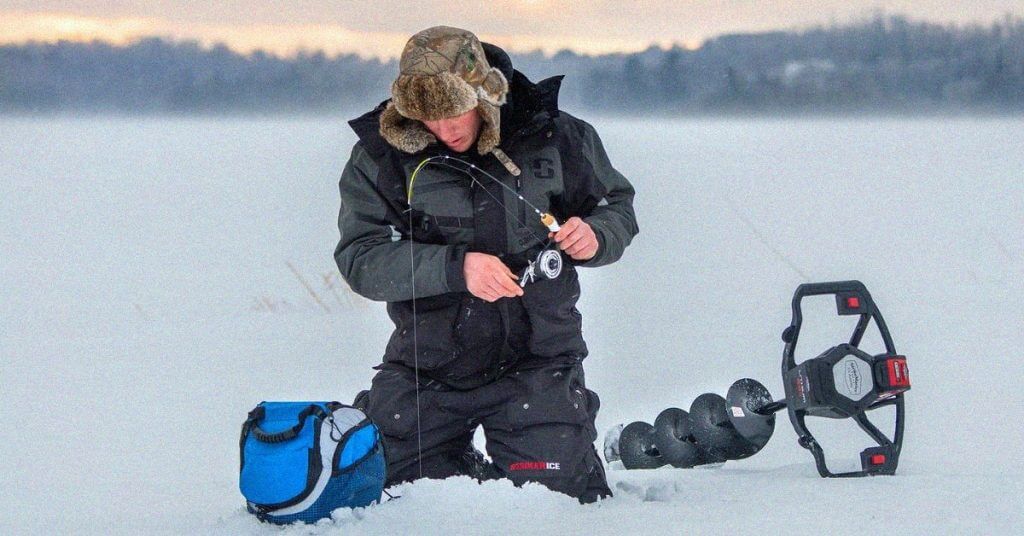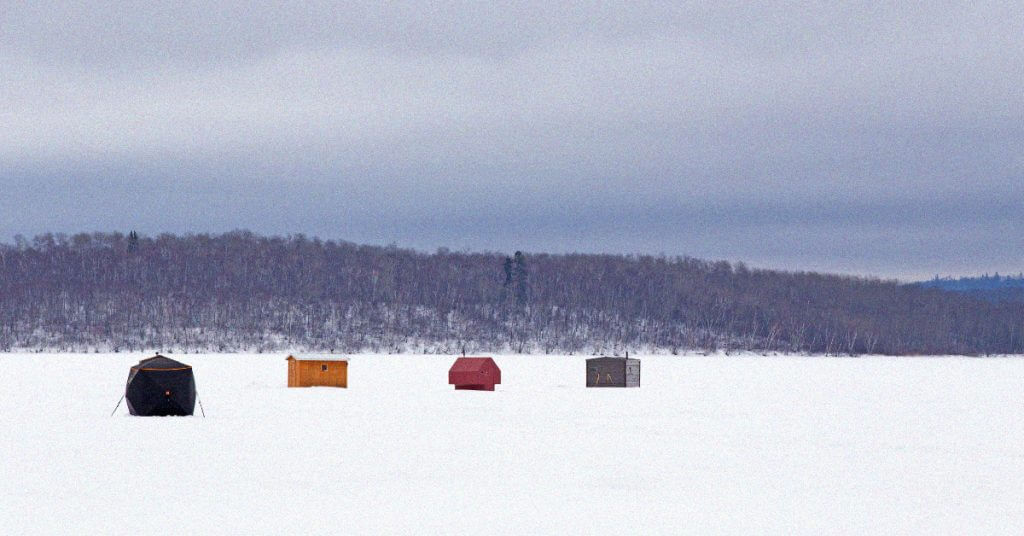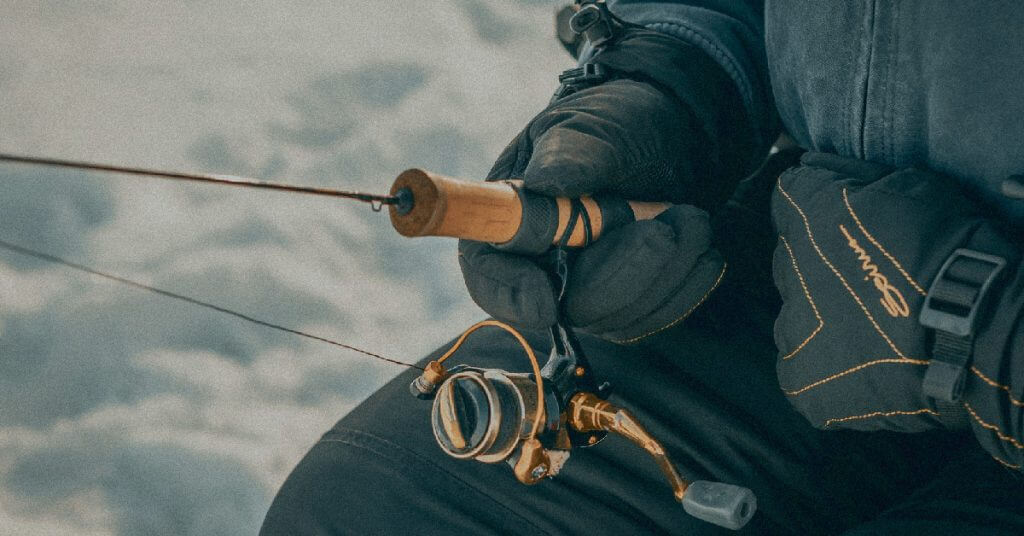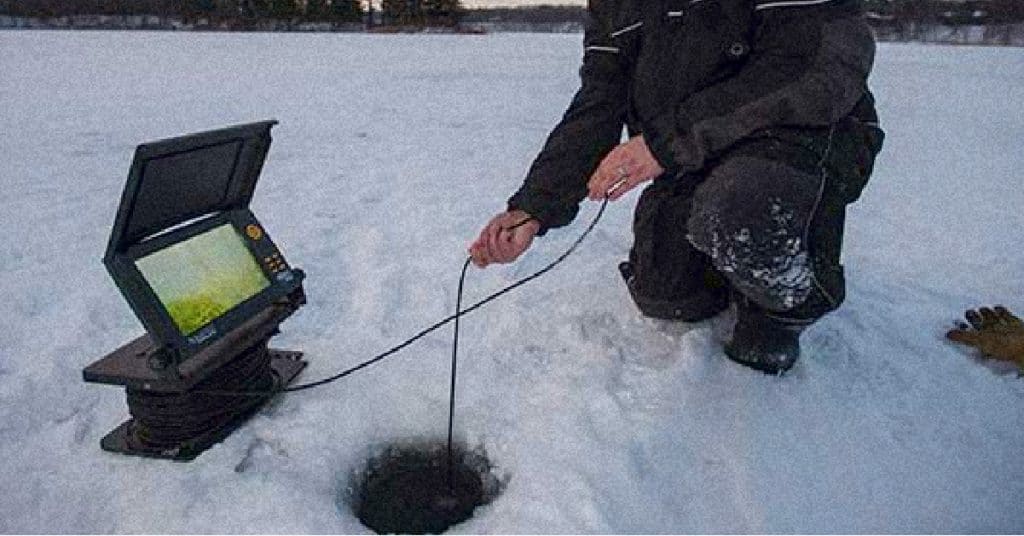Most experienced anglers rank perch near the top of freshwater fish that are tasty and fun to catch year-round.
Because of their aggressive fight, perch make some of the best ice fishing for ice anglers from Minnesota to the northeast.
The following is all you need to know to get started ice fishing for perch. That includes what to use, where to look, and tips on how to master catching perch.
Where to Ice Fish for Perch?
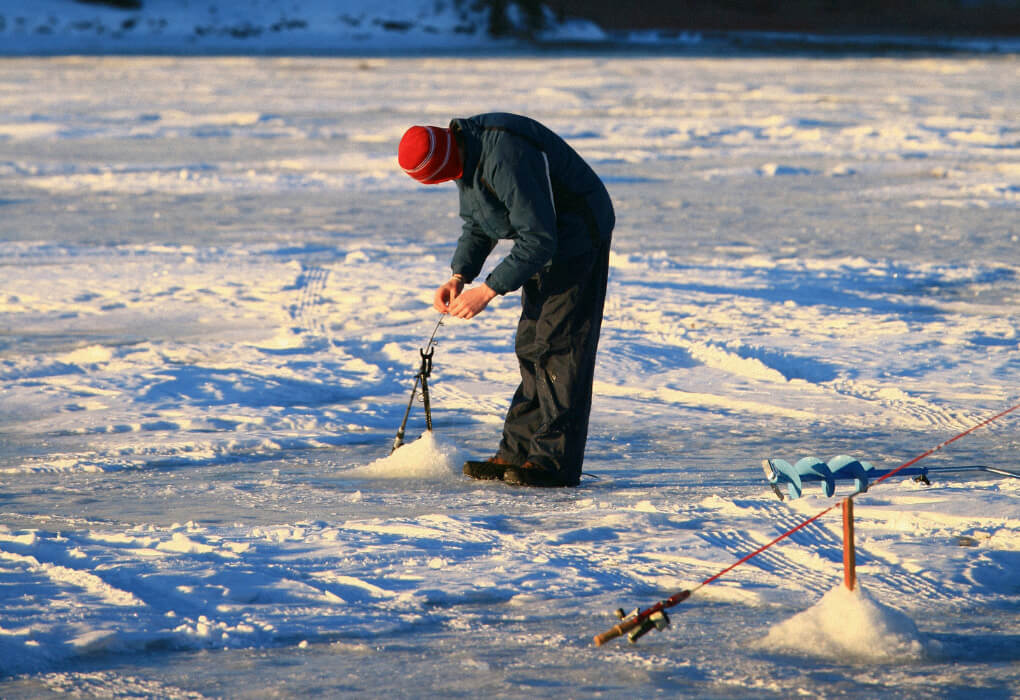
Yellow perch transition water depths year-round.
One rule to remember is that, in most cases, the thicker the ice, the deeper the perch.
That means you start in shallower water, work your way to deeper water as the season progresses, and reverse the process as winter gives way to spring.
While jumbo perch are more solitary, they’re usually near a pool of younger fish but on the deeper water side.
So use your auger to drill over where you think they might be hiding and follow this pattern.
Early Winter – Look Shallow
In early winter, perch are still active fish. They will hang out along weed lines and around rocks, docks, and other structures.
They will also spend time around areas with access to streams and river mouths. If ice fishing on a river, look for coves or inlets where the current is not as strong.
Perch choose shallow water in early winter for two reasons:
- The weed lines provide safety for aquatic insects and minnows
- The structure offers perch a place to hide from predators
The best way to fish in shallow water is to hold your jig just above the weed line and drop it occasionally to stir up the bottom.
Then, raise it to the previous position. You can also twitch your rod tip to make the jig or lure move in a jerky but attention-grabbing fashion.
Mid-Winter
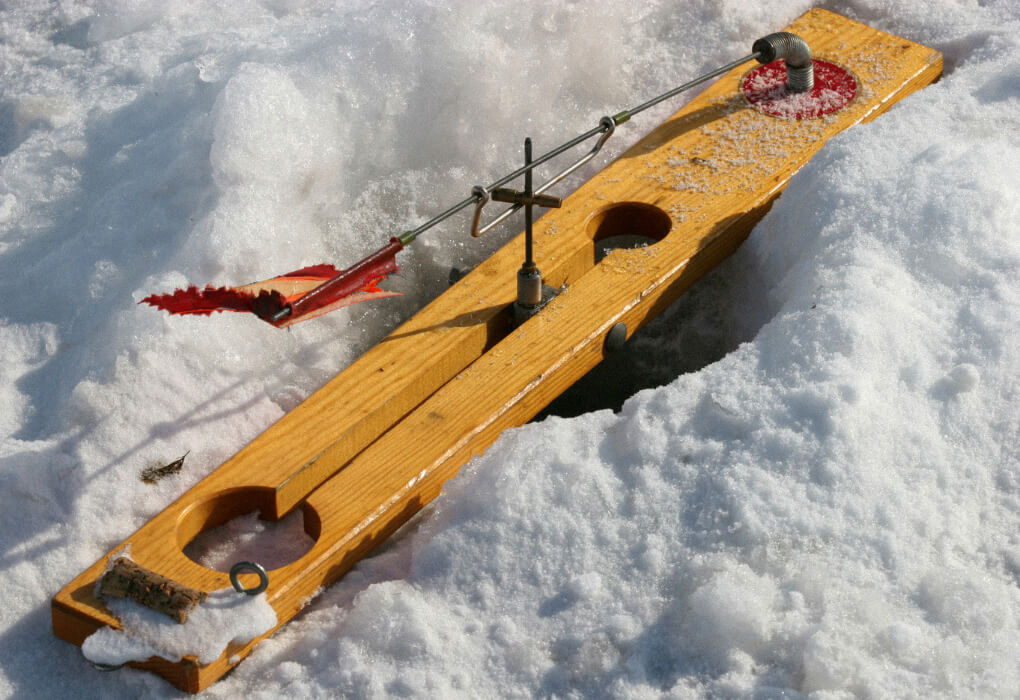
Perch migrate to deeper water as winter progresses. Their motivation for deep water is primarily the availability of food.
As insects burrow deeper in shallower water and minnows die off, moving deeper is instinctual.
Because insects live in the mud and silt of deeper bottoms year-round, perch will root them out the way a pig will root out grubs.
During mid-winter, target your bait near the bottom. Stir up the silt and then hold your bait just above the area.
Any perch investigating the disturbance, which will be most in the vicinity, will see the jig, lure, or live bait you are using and will likely bite it.
Late Winter
As the weather warms and ice melts, perch transition to shallower water again and begin to prepare to spawn in early spring.
Look for perch in the same places as you found them in late fall or early winter, as well as suspending off dropoffs.
In late winter, perch will lurk around structure and along the edges of grass lines. They will also move into shallow flats but prefer water between 10 and 30 feet deep.
Best Perch Ice Fishing Lures

The basic rule for perch fishing lures, jigs, or live bait is “keep it simple.” Perch are not sophisticated animals, and while they can be cunning, their aggressiveness often overrides any caution they have.
Your ice fishing reel(s) should have a 6 to10-pound test line. If you use a braided line, go with a 10-pound test and a fluorocarbon leader. Your rod should be as light as possible, either a light-action rod or ultra-light.
Any fishing tackle that resembles a worm or baitfish will work on perch whether you are fishing a rod and reel or with tip-ups.
Tungsten jigs work best because they quickly get the bait to the bottom in a small profile.
Remember that because their mouths are relatively small, perch will prefer smaller jigs and lures.
A tungsten jig head that you twitch between deadstick periods will be irresistible to most perch.
While you can try any type of spoon or jig, Rapala makes several suspending and sinking lures ideal for perch. Silver, white, or cream colors work best.
Top off whatever you offer with a waxworm (covered later) to add scent to the lure. Adding a flasher can also increase your bite ratio.
Jigging for Perch: How to Master it
There are a couple of strategies for perch ice fishing.
Drop, Bounce, and Retrieve
Drop your jig or lure to the bottom, and let it hit with no resistance on your line. Rapidly raise the tip of your ice fishing rod and let the bait fall to the bottom again.
You want the bait to appear as though it is “bouncing.” The activity will stir up silt and indicate activity that will attract the fish’s attention.
After that, raise your bait about a foot off the bottom and jig as usual.
Suspend
If you identify perch in the water column, drop your jig or lure to that depth and let it sit.
Twitch the rod tip every 30 seconds to a minute to give the bait some action.
A dropper rig with a spoon or flasher works best with this approach.
Drop and Flutter
Drop the bait to the bottom and let it lay for about five seconds.
Jerk the bait about a foot off the bottom and let it flutter down.
Repeat the process.
The jerk and fluttering resemble dying baitfish, and just about every type of fish in the vicinity will be intrigued.
5 Pro Tips to Catch More Perch
Here are a few ice fishing tips for perch.
Scout the Ice Fishing Terrain Before Ice-In
Take time at the end of the open-water fishing season and document potentially good perch environments.
Use sonar or an underwater camera if you have one, and look for shallow bays, rock outcroppings, underwater building structures, reefs, etc., that will serve perch well once open water freezes over.
Document several areas that might be profitable during ice fishing season and use those spots for “hub” holes.
You can then put additional holes around the area you think might be good perch fishing and increase your chances of success.
An ice fishing fish finder can be invaluable when picking satellite ice holes.
Also, note if your area would be suitable for bass fishing or habitat for other predators.
An area might be ideal for big perch, but if it is also ideal for walleye, bass, or pike, the perch might forgo the area in favor of a less hostile place.
Use a Hub and Spoke Alignment
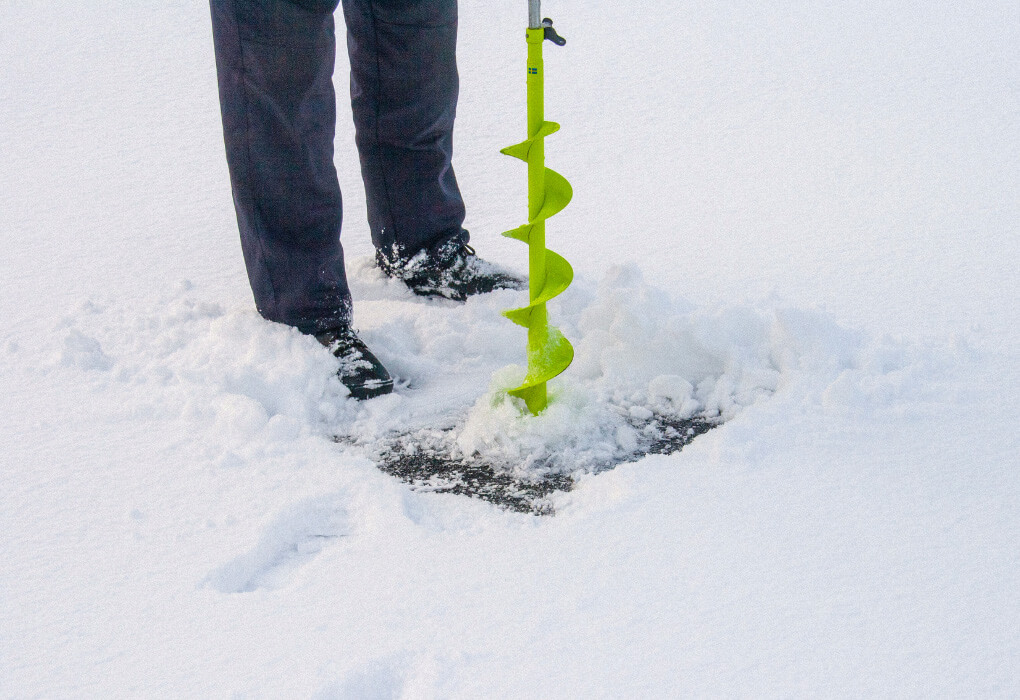
Drop one central hole and several holes around that hub to help pinpoint where a school of perch might be hanging out.
Once you have a hole that produces more than the others, use that hole as your hub.
Work Different Depths
Perch can range from a few feet deep to over 50 feet down. While perch are not picky eaters, they will not hang out once the food options diminish with colder water.
They will be in shallower water when early ice forms and deeper water as the season progresses, but you can find them all along the water columns pretty much all year.
Younger Fish Pool, Older Fish Go Their Own Way

If you are targeting younger fish, if you catch one, you probably can catch at least a few more.
Younger perch will tend to school. With schooling perch, you should present your lure or bait at roughly the same depth you caught your first few fish.
Drill holes in several locations around the hole you first caught the small perch.
With older fish in deeper water, drilling one or two holes from your central hole will give you a better chance at picking up any other perch in the area, as older perch tend to hang out alone but near other big perch.
Do not waste a lot of time on one hole if you catch a jumbo perch, as big perch won’t usually occupy the same space.
Top Off With a Waxie or Maggots

Perch love waxworms and maggots.
They love the smell, look, and, presumably, taste.
Waxworms work particularly well with panfish like bluegills and crappie in addition to perch.
Top off your lure or even live bait with a waxworm for extra enticement.
Final Thoughts
Fishing for perch is a lot of fun all year, and ice fishing for perch is no exception.
Target their feeding zones, pick the lure with the right amount of flash and action, and get on top of a school of perch and you will be hauling them in on all ice fishing trips.
Let us know what your favorite species to target while ice fishing is in the comment section!

